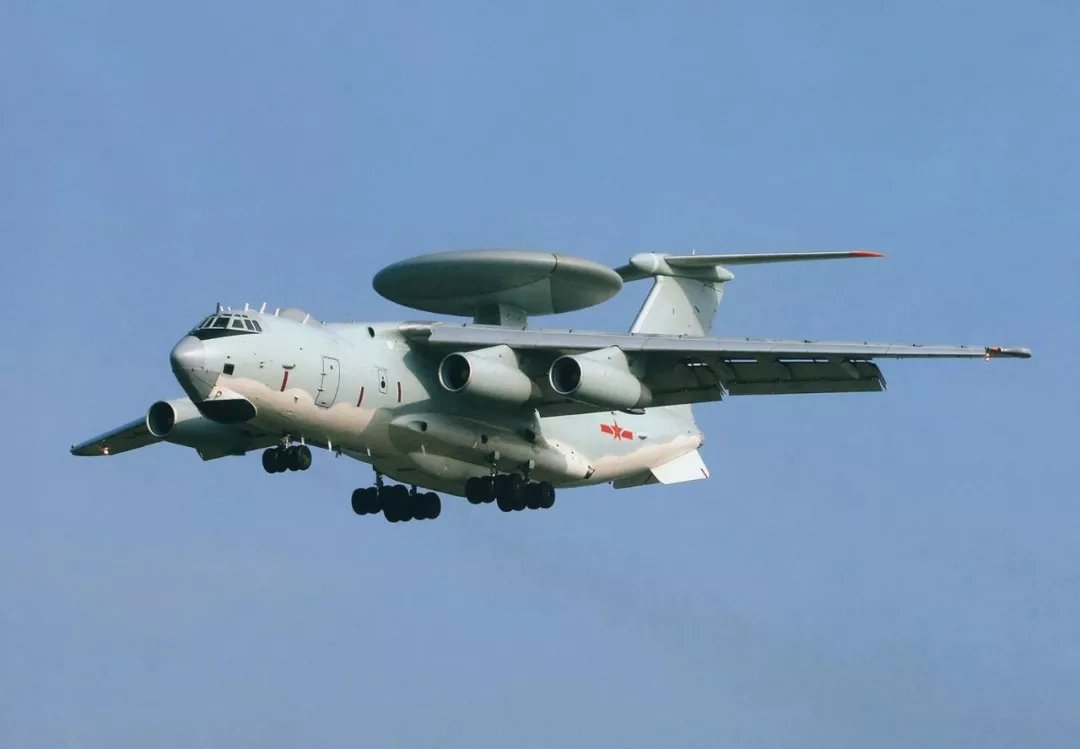You are using an out of date browser. It may not display this or other websites correctly.
You should upgrade or use an alternative browser.
You should upgrade or use an alternative browser.
PLA AEW&C, SIGINT, EW and MPA thread
- Thread starter Sczepan
- Start date
Sorry, don't know where you get that estimation, but it seems to me that kind performance is not possible to be tested in real world, let alone meaningful or useful and even actually exists.KJ-500s are coming around pretty well, does anyone have aperture size estimates for the KJ-500? Rough estimates seem to be implying an amazing 1450 km detection vs 0 dBsm. Pity it isn't counterstealth, however.
1. The earth is curved. An observer (AWAC) at altitude 10,000 meters (most cruising altitude) has a distance to horizon of 357.1km. That means beyond that distance, object below a "hidden height" is blocked by the earth's curve. The "hidden height" of a target 1450km away from the observer is 93km (90,000m). No airbreathing aircraft can fly that high. Most fighter jets can reach around 20km.
2. (I suppose that you mean dBm instead of dBsm. 0 dBm is 1mW). Radar detection is never measured by distance vs power. Power (at the AWAC) of the return signal from the target 1450km away being 1mW? That signal has travelled 1450 x 2 = 2900km, and still remained 1mW. I don't think that kind of microwave emitter exists on earth.
No doubt, KJ-500 is advanced, and probably the most advanced AWAC in service judging by its architecture and technical realization (digital phase modulation). But it is still based on known technology.
supplement to #2004
There are ground based radars being able to detect target thousand km away. But they are huge (so the high power) in tens of square meters. They are to detect ballistic missiles which can reach very high altitude beyond 93 km during their ascending phase. But it is certain a Y-8 platform can not carry radar of this size.
There are ground based radars being able to detect target thousand km away. But they are huge (so the high power) in tens of square meters. They are to detect ballistic missiles which can reach very high altitude beyond 93 km during their ascending phase. But it is certain a Y-8 platform can not carry radar of this size.
2. (I suppose that you mean dBm instead of dBsm. 0 dBm is 1mW).
Radar Cross Section (RCS) is a measurement whose units are surface area, typically recorded in square meters. Since RCS is a quantity that can change several orders of magnitude as the angle between the radar and the target varies, usually the base 10 logarithm of the linear RCS is used to show the RCS in plots. It is routine to see the RCS represented this way in dBsm, or decibel square meters.
Hendrik_2000
Lieutenant General
[Zhuhai 2018] CETC 14th will present its new fully-electronically scanned "Silk Road Eye" (Œ 之 眼) radar developed for AWACS at the Zhuhai Auto Show.


Hendrik_2000
Lieutenant General
From Dafengcao
The ZDK-03 looking AEW & C a / c could be the new "Silk Road Eye" AEW & C aircraft to be unveiled at Zhuhai Airshow featuring new APAR technology, developed by CETC No. 14 Institute.


The ZDK-03 looking AEW & C a / c could be the new "Silk Road Eye" AEW & C aircraft to be unveiled at Zhuhai Airshow featuring new APAR technology, developed by CETC No. 14 Institute.


Look at the white strip of the radome, it seems to be mechanically rotated two faces antenna. That means the vertical plane is electrically scanned, while the horizontal plane is mechanically scanned. The horizontal plane can also be scanned electrically when the rotation is stopped in a "staring" mode.From Dafengcao
The ZDK-03 looking AEW & C a / c could be the new "Silk Road Eye" AEW & C aircraft to be unveiled at Zhuhai Airshow featuring new APAR technology, developed by CETC No. 14 Institute.


My guess of this arrangement (over three faces fixed radome like KJ-2000) is that the panel can be as large as one of the three on KJ-2000, giving an equal performance in a smaller package. The downside is the slow scanning rate when mechanically rotated, or the blind spots when electrically scanning.
Overall it is a good improvement over the balance beam arrangement.



